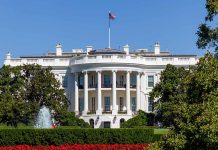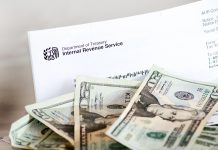
The impending Hawaii Supreme Court decision holds the potential to reshape a $4 billion settlement connected to the 2023 Maui wildfires.
At a Glance
- Hawaii’s Supreme Court to rule on whether insurers can seek reimbursement post-Maui wildfires.
- $4 billion settlement reached to compensate wildfire victims and limit defendants’ liabilities.
- Insurance firms claim over $2 billion in payouts and aim to hold parties accountable.
- Decision may alter insurer strategies and impact victims’ settlement agreements.
Court to Decide Subrogation’s Role
The Hawaii Supreme Court’s impending ruling could alter the current landscape of the $4 billion settlement negotiated after the devastating 2023 Maui wildfires. Insurance companies, having paid over $2 billion to victims, are fighting for the right to pursue further claims against Hawaiian Electric and others, whom they hold accountable. The legal concept of subrogation allows insurers to step into the victims’ shoes in legal claims but has met resistance with the current settlement terms barring such action.
The August 2023 fire led to 102 fatalities and massive infrastructure damages on Maui. While Hawaiian Electric and large landowners are under scrutiny, insurance companies claim they have been sidelined in settlement negotiations. They argue they have a right to participate in the legal proceedings against defendants connected to the wildfire. However, Maui Circuit Court Judge Peter Cahill has consistently blocked subrogation claims, pending the Supreme Court’s resolution.
Hawaii’s Supreme Court will consider questions about issues that threaten to thwart a $4 billion settlement in last year’s devastating Maui wildfires.https://t.co/vMefHmbvZF
— Insurance Business America (@InsuranceBizUS) September 27, 2024
Implications of Potential Rulings
A pivotal aspect of the court’s deliberation includes whether insurers are rightfully barred from pursuing their claims against interconnected defendants. The multi-billion-dollar settlement aims to compensate fire victims swiftly. However, should the court permit insurers to litigate independently, the settlement could unravel, leaving victims in prolonged legal limbo. Attorneys representing fire victims argue the insurers’ actions endanger their swift payment.
“We look forward to making our case before the Hawaii Supreme Court about the importance of maintaining insurers’ independent lawful rights to subrogation, which is the industry standard nationally and protects the interests of all policyholders,” said Vincent Raboteau, an attorney for the insurance companies.
Hawaiian Electric Co., Kamehameha Schools, and others face separate lawsuits from fire victims seeking immediate reparations. Plaintiffs’ lawyers assert that the current collective settlement is the best route to avoid entrenching in costly, protracted litigation. Until the court’s decision, the legal battle remains intense, risking the potential voiding of an already negotiated settlement if insurers’ claims are upheld.
Anticipated Timeline and Potential Impacts
The Hawaii Supreme Court seeks to conclude this legal determination by the year’s end, following a structured timetable for parties to present and counter briefings. Involving over 140 insurance entities, from global giants like Lloyds of London to local firms, the case underscores the far-reaching implications for industry practices and provides clarity on subrogation rights. A significant court affirmation for insurers could catalyze shifts across the insurance and legal sectors alike.
“I think the Supreme Court recognizes the importance of the issue for the people of Maui and the state of Hawaii and its core institutions,” said Jesse Creed, representing thousands of victims.
The settlement’s integrity might rest on whether insurers reassert their subrogation claims without jeopardizing victims’ compensation. Should the court side with insurers, individual plaintiffs could face new litigation and potentially reduced financial recoveries. While expectations hang in the balance, parties involved are preparing for what could be a landmark decision shaping insurance litigation in community disaster recoveries.







